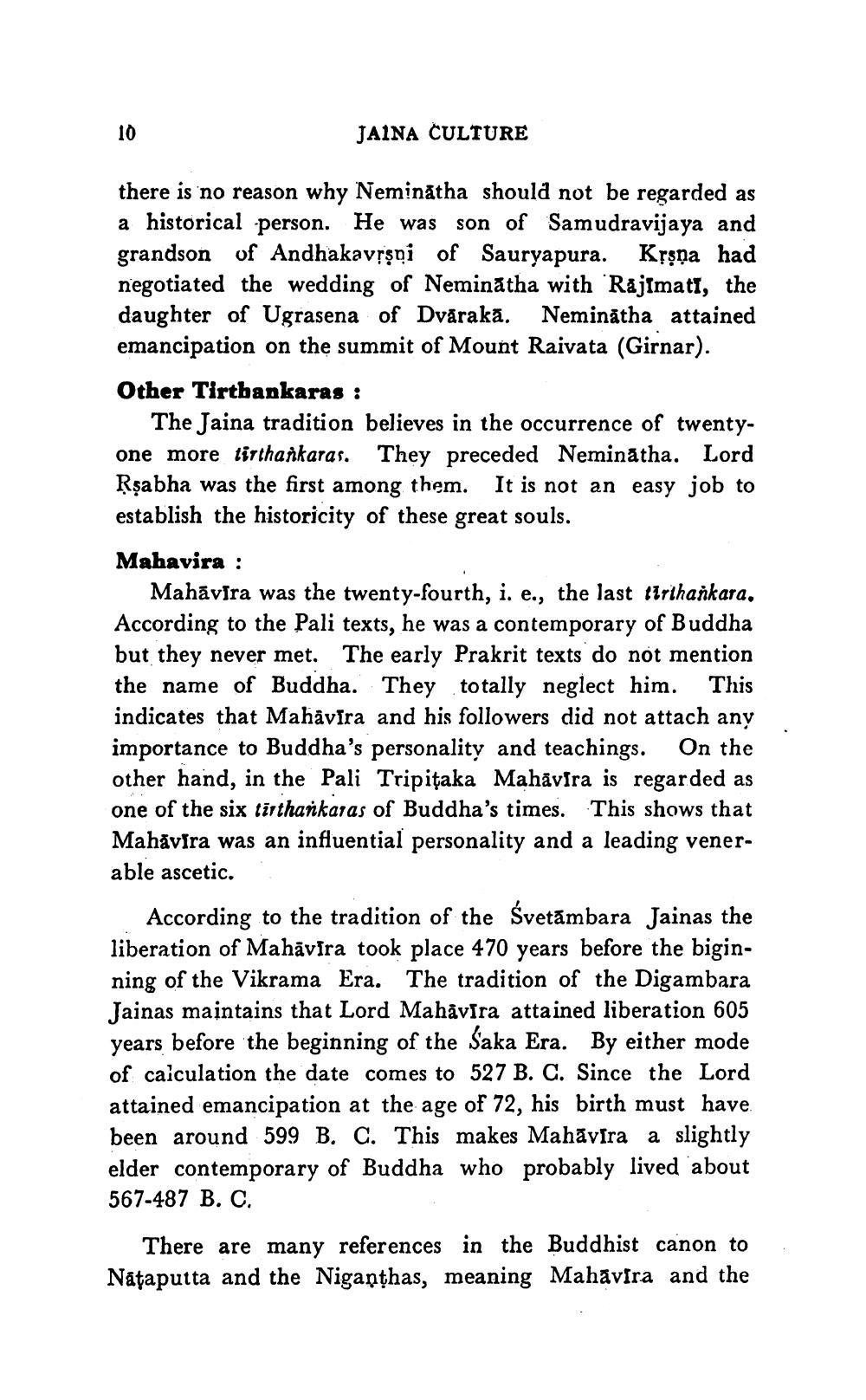________________
JAINA CULTURE
there is no reason why Neminātha should not be regarded as a historical person. He was son of Samudravijaya and grandson of Andhakavrsni of Sauryapura. Krşņa had negotiated the wedding of Neminatha with Rajímati, the daughter of Ugrasena of Dvārakā. Neminátha attained emancipation on the summit of Mount Raivata (Girnar). Other Tirthankaras :
The Jaina tradition believes in the occurrence of twentyone more tirthankaras. They preceded Neminatha. Lord Rşabha was the first among them. It is not an easy job to establish the historicity of these great souls. Mahavira :
Mahāvīra was the twenty-fourth, i. e., the last tiriharkara. According to the Pali texts, he was a contemporary of Buddha but they never met. The early Prakrit texts do not mention the name of Buddha. They totally neglect him. This indicates that Mahāvīra and his followers did not attach any importance to Buddha's personality and teachings. On the other hand, in the Pali Tripitaka Mahavsra is regarded as one of the six tīrthankaras of Buddha's times. This shows that Mahāvīra was an influential personality and a leading venerable ascetic.
According to the tradition of the Svetāmbara Jainas the liberation of Mahāvīra took place 470 years before the biginning of the Vikrama Era. The tradition of the Digambara Jainas maintains that Lord Mahavira attained liberation 605 years before the beginning of the Saka Era. By either mode of calculation the date comes to 527 B. C. Since the Lord attained emancipation at the age of 72, his birth must have. been around 599 B. C. This makes Mahāvīra a slightly elder contemporary of Buddha who probably lived about 567-487 B. C.
There are many references in the Buddhist canon to Nātaputta and the Niganthas, meaning Mahavira and the




